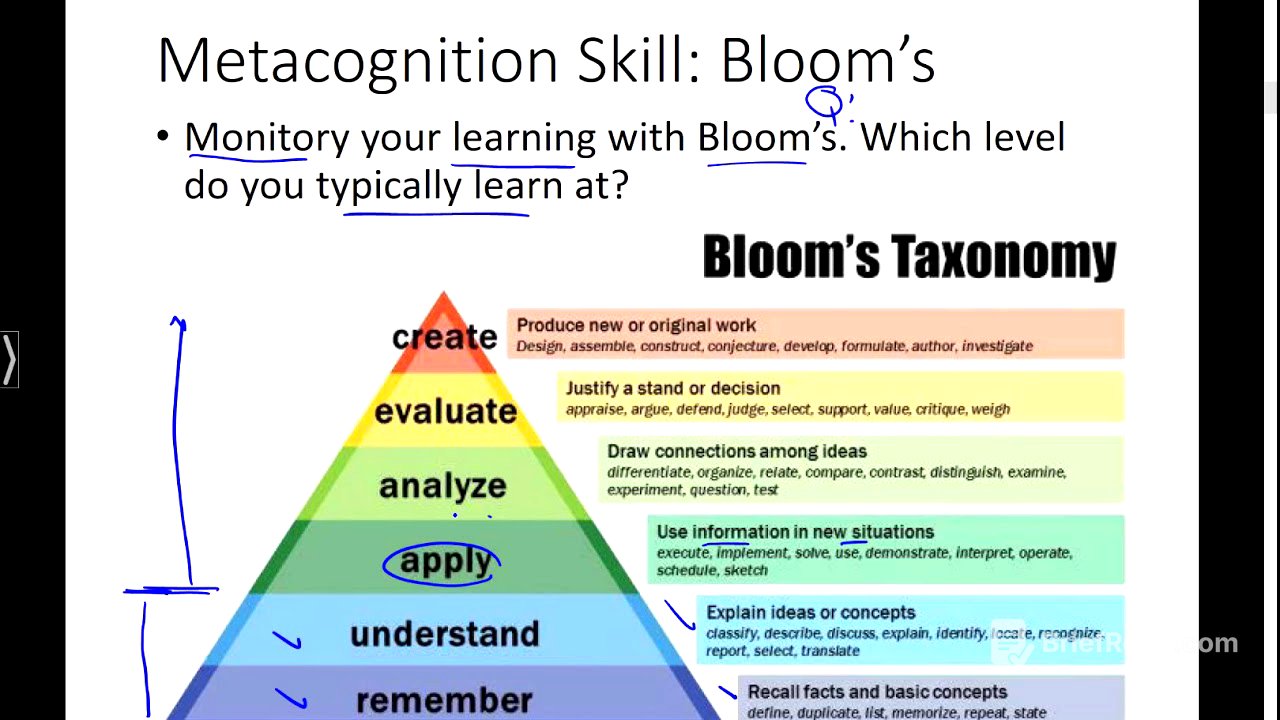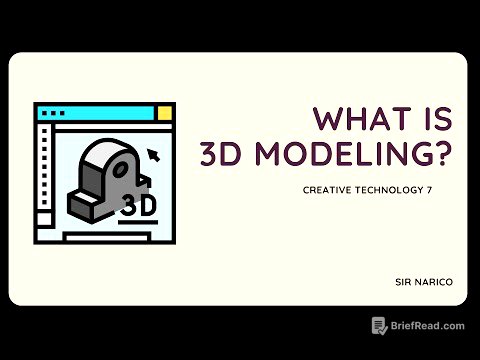TLDR;
This video introduces metacognition skills as "learning to learn," offering practical techniques to improve learning and academic performance. It emphasizes adopting a growth mindset, monitoring learning through Bloom's Taxonomy, and employing active learning strategies such as previewing with questions, cumulative reading, and self-testing. The video also covers effective study habits like intense, interleaved study sessions, chunking information, paraphrasing, and using exam wrappers for performance evaluation.
- Metacognition is presented as a key skill for enhancing learning and intelligence.
- Active learning strategies are crucial for moving beyond passive knowledge absorption.
- Consistent self-testing and reflection are vital for identifying and addressing knowledge gaps.
Introduction to Metacognition [0:00]
The video introduces metacognition as "learning to learn," a set of skills that can significantly improve learning outcomes, particularly beneficial for college students. The presenter, Steve Orpurt, also known as Prof 0, shares his observations of students who have successfully used these skills to improve their grades and learning. He has spent the last two years researching metacognition and aims to summarize implementable skills in this screencast.
Growth Mindset vs. Fixed Mindset [2:03]
The video contrasts a fixed mindset, which assumes intelligence is innate and unchangeable, with a growth mindset, which views intelligence as a muscle that can be developed through effort and discipline. People with a fixed mindset tend to avoid challenges and criticism, while those with a growth mindset embrace them as opportunities for learning and mastery. Adopting a growth mindset is crucial for improving intelligence and learning capabilities. Research suggests that individuals perceived as intelligent have often learned to learn more effectively.
Monitoring Your Learning with Bloom's Taxonomy [6:07]
The first metacognition skill discussed is monitoring one's learning using Bloom's Taxonomy. Many students learn at lower levels, focusing on remembering and understanding facts rather than applying, analyzing, evaluating, or creating. The video encourages moving up Bloom's Taxonomy by actively applying knowledge in new situations and drawing connections between ideas. The remaining metacognition skills serve as tools to facilitate this progression.
Intense, Interleaved Study Sessions [8:50]
The video advocates for intense, interleaved study sessions, where students study each course and all the material within each course daily. Instead of forgetting about a topic until the exam, students should continuously revisit previously learned material. Experts recommend 30 to 50-minute sessions, and techniques like the Pomodoro Technique can help with procrastination. During these sessions, avoid simply rereading material; instead, employ the metacognition skills discussed.
Previewing Material with Questions [10:55]
The video emphasizes the importance of actively previewing course material by asking "why," "how," and "what if" questions before class. This helps move learning to higher levels of Bloom's Taxonomy. Skimming textbooks and lecture notes beforehand and attempting to solve example problems can generate questions to be answered during class. Taking notes by hand, rather than typing on a computer, aids in assimilating information and moving up Bloom's Taxonomy.
Cumulative Reading [15:06]
The video introduces cumulative reading, where after reading a sentence, paragraph, or section, one asks how it relates to the prior content. This active engagement builds understanding and generates questions, functioning at a higher cognitive level. Despite initial perceptions of being time-consuming, students report that it saves time due to improved retention and comprehension.
The 30-Second Rule [17:26]
The "30-second rule" involves taking a moment after reading a passage or attending a class to write down the important concepts and ideas. This helps in remembering information and identifying gaps in knowledge. Subsequently, notes should be read actively to fill in these gaps, writing out new questions by hand.
Chunking Information by Concept [18:39]
The video explains the technique of chunking information by concept, where students organize material by identifying a central concept and then breaking down the supporting knowledge into smaller chunks. As expertise grows, these chunks become larger and more interconnected.
Paraphrasing and Teaching Others [23:01]
The video suggests developing the habit of paraphrasing and teaching or explaining topics to others, including peers or even inanimate objects. This aids in organization, retrieval, chunking, and concept identification. Working in groups facilitates paraphrasing as students explain problems and concepts to each other.
Tying New Information to Existing Knowledge [24:07]
The video advises actively relating new material to what one already knows. For example, accounting students learning about "corridor amortization" should connect it to the familiar concept of "amortization," identifying overlaps and new concepts.
The Importance of Self-Testing [24:51]
The video stresses the importance of self-testing as a learning tool. Testing helps assimilate and retrieve information and identifies gaps in knowledge. Students should use preview questions, textbook problems, and practice exams to test themselves. Solving problems without looking at solutions and focusing on finding mistakes independently further enhances learning.
Memory Palace Technique [27:15]
The video introduces the "memory palace" technique, where items to be remembered are mentally placed along a familiar geographic route. This method, used by memory experts, aids in memorization and recall.
Using Exam Wrappers for Performance Evaluation [28:18]
The video suggests using "exam wrappers" to evaluate exam performance with the goal of improving future learning. This involves reflecting on the time spent on the material, the percentage of time spent on best practices, and identifying areas for improvement.
Example of a High-Performing Student [29:11]
The video shares an example of a student with exceptionally high exam scores who employed various metacognitive strategies, such as reading before lectures, anticipating test questions, answering rhetorical questions, reorganizing course information, and spacing out review and practice.
Motivation and Implementation [30:47]
The video touches on motivation, recommending a YouTube interview with Mel Robbins. It emphasizes focusing on the process of learning and building good processes through metacognition skills. Research indicates that many students do not consistently employ these skills, leaving room for improvement. The video concludes by encouraging viewers to start developing these skills immediately by summarizing the important concepts of metacognition.









